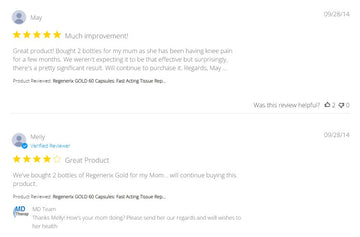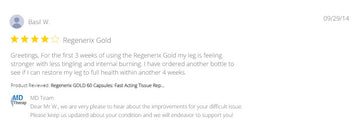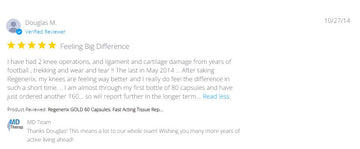Wall Slides (Forearms): Serratus-Friendly Upward Rotation Without the Pinch
by MD therapeutics on Aug 18, 2025
Why wall slides (forearms) help (the principles)
-
Promotes upward rotation & posterior tilt. Using forearms on the wall recruits serratus anterior and lower traps so the shoulder blade clears the acromion as the arm elevates—reducing that “pinch.”
-
Centers the ball in the socket. Gentle co-contraction lets the rotator cuff keep the humeral head seated while the scapula does its job.
-
Range-aware and joint-friendly. The wall limits motion to a guided plane; you choose the depth so symptoms stay ≤3/10.
-
Posture carryover. Trains rib control (no flaring) and neck relaxation—useful for desk posture, reaching, and overhead tasks.
How to do it (precise, range-aware)
Setup
-
Stand facing a wall. Forearms on the wall, elbows bent ~90°, towel or sliders under forearms to reduce friction. Feet a step back, ribs gently down, chin lightly tucked.
Movement
-
Exhale → slide forearms up while gently pressing them into the wall (that “push” wakes up serratus).
-
Keep shoulders down/away from ears; avoid rib flare or low-back arching.
-
Inhale → slide back down with control, staying “long” through the neck.
Dose & progressions
-
2–3 sets × 6–10 reps, 3×/week (or micro-sets daily).
-
Add a 2–3 s hold at the top once pain is calm.
-
Progress to a “Y” finish (only if painless), or to lift-off holds (forearms hover 1–2 cm off the wall) for extra cuff/serratus work.
-
Modify/avoid if night pain worsens or symptoms radiate past the elbow—shrink range or pause and check with your clinician.
Common errors to avoid: shrugging; pushing head forward; ribs popping; elbows drifting too wide; locking the wrists.
Limits of exercise alone
-
Doesn’t fix systemic drivers (sleep, stress, diet, metabolic health).
-
Flares cap training load, creating stop–start progress.
-
Wall slides won’t by themselves restore full overhead capacity—you’ll still need cuff loading, thoracic mobility, and graded elevation work.
-
Tendon/capsule remodeling is slow (months), so pair training with recovery and nutrition.
Why add nutritional correction
-
Improve circulation so cuff, capsule, and peri-scapular tissues receive oxygen/nutrients after sessions.
-
Promote repair with collagen peptides and hyaluronic acid supporting joint matrix and glide.
-
Reduce excessive inflammation to keep day-to-day training tolerable.
-
Avoid tissue damage by buffering oxidative/catabolic stress from repetitive loading.
Botanicals & nutrients often paired with shoulder-friendly rehab
(Traditional lore + published research; evidence ranges from promising to mixed. Check interactions and personal suitability.)
-
Ginger (Zingiber officinale): Traditional Ayurveda/East Asian use for circulation and “wind-damp” aches; standardized extracts show modest symptom support for some.
-
Turmeric / Curcumin (Curcuma longa): Ayurvedic staple; bioavailability-enhanced curcumin often improves joint pain/function vs placebo; food turmeric alone has little curcumin.
-
Boswellia / Frankincense (Boswellia serrata): Shallaki resin; standardized extracts associated with improved pain/function in OA cohorts.
-
Winter Cherry / Ashwagandha (Withania somnifera): Adaptogen; trials suggest immunomodulatory effects and symptom support that may aid training tolerance.
-
Collagen Peptides (Type II focus): Provide peptides that may support cartilage/tendon matrix alongside loading.
-
Hyaluronic Acid (oral): Contributes to lubrication/viscosity for smoother motion.
-
Cat’s Claw (Uncaria spp.): Amazonian tradition for “rheumatism”; small trials show short-term pain improvements (evidence still limited).
The practicality problem
-
Food-only dosing is hard: Hitting research-like ginger/curcumin intakes via meals is impractical daily.
-
Pill burden & cost add up: Buying 6–7 separate products (ginger, turmeric, boswellia, ashwagandha, collagen, HA, cat’s claw) means many capsules and higher monthly spend.
A convenient all-in-one option: Regenerix Gold™
Prefer wall slides + nutrition without juggling bottles?
-
What’s inside: Hydrolyzed Type II Collagen, Hyaluronic Acid, plus Ginger, Turmeric, Frankincense (Boswellia), Cat’s Claw, and Winter Cherry (Ashwagandha)—the same seven ingredients discussed above—combined to promote healthy joint and muscle function and everyday recovery.
-
Need only: 2–3 capsules daily.
-
Price: $98 a bottle.
-
Why it fits here: One formula covering seven evidence-linked ingredients is simpler—and typically more cost-effective—than buying 5–7 separate supplements.
-
Track record: Recommended by doctors and physical therapists internationally for about a decade (individual clinician views vary).
Supplements support healthy function; they do not diagnose, treat, or cure disease. Check interactions (e.g., anticoagulants with turmeric/ginger/boswellia).
This week’s shoulder mini-plan
-
Wall slides (forearms): 2–3 sets × 6–10 reps, 3×/wk, hold 2–3 s at top, pain ≤3/10.
-
Pairings:
-
Band rows 2–3×8–12,
-
Isometric ER & IR (elbow at side) 2–3×6–10 holds,
-
Thoracic extension (roller) 1–2×8–10.
-
-
Progression: Add lift-off holds and light overhead press progressions when symptoms stay calm for 7–10 days.



